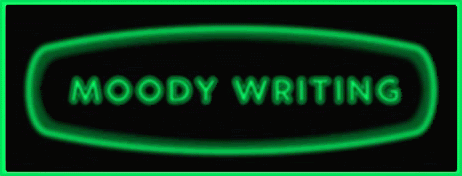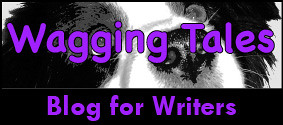The difficulty with coming up
with a story is that you start with no frame of reference. There’s you and
there’s the blank page.
The advantage of writing
description is you have a definite place to start. You may use your skill and
talent to augment it, but when you describe a mug, you have a pretty good idea what a
mug looks like to get you started.
This is why aspiring writers will
often bury themselves in long descriptions. Because it’s easier. But that’s
also why it’s less impressive, no matter how beautiful the prose. And why you
have to police yourself much more rigorously.
It’s also very easy to convince
yourself that really getting into the minutiae of an object or a scene is a valid
form of expression because you’ve seen other authors do it. Great authors. And
that is true. Up to a point.
The thing about genre fiction is
that if you want to learn how to write it, read some good examples and you’ll
have a pretty good idea. Oh, you’ll say, that’s how that’s done.
With literary fiction it’s not so
easy. It’s more like thinking you can build a clock because you know how to
tell the time. Like a well constructed timepiece, good literary fiction has all
the workings hidden. You can stare at the hands going round the face all you
want, it won’t reveal the inner workings.
So for many readers, they feel
the meaning, they sense a purpose, but all they see is the pretty prose. And
that’s what they emulate. The barn and the sunset. The purple and orange. The frayed
paint. Red barn in shadow. The sun sinking in orange and purple. And so on.
Cormac McCarthy does it (plus a
few dead babies), so why not you?
What’s missing is purpose. Why
are you describing what you’re describing? If it’s just to make sure the reader
can see things clearly then you’re wasting time and words. The effect will be
to slow down the pace and frustrate the reader when all the detail turns out to
have not particular reason to be there. It’s not just purpose you need, it’s an
interesting purpose.
Let’s say a child is in a car
crash. He is thrown clear and when he comes round he sees the car mangled,
smoke and flames, his mother covered in blood, her body wrapped around the steering
wheel, her face caved in and death in the air.
Traumatic stuff. Well worth
describing in great detail, right? No, not really. Not if that’s all it is.
Yes, it gives an insight into a formative moment in this child’s life. So what?
Now imagine the same scene but
the mother is still alive, but the child is so repulsed by her gruesome visage
that he can’t approach her. The rest of his life he doesn’t know if he could
have saved her if he had been able to overcome his fear of the half-faced
monster his mother had become. Describing the scene now has a purpose.
But wait. What if I describe the
scene with full on detail turned up to eleven, but the fact he carries this
guilt is not mentioned? The purpose will only be revealed later in the story.
Won’t the scene read just like the earlier purposeless version on the page?
After all the reader only has the text
in front of them to work from.
And that’s where the writer needs
to use their understanding of their purpose to infuse the scene with meaning
without actually stating what the meaning is. Through subtext, through imagery
and focus. You have to be able to excise that which does not serve the purpose
of the scene, so that what’s left has the power to suggest something more than
a simple backdrop.
Once you know the focus is on his
horror at what his mother looks like you know where to put your
description. Dents in the car and the way the smoke floats into the sky won’t
help so don’t waste words on them.
And if your purpose is different
you change accordingly. The same car crash could be used to express a
fascination with death, broken technology, war wounds, ecological disaster,
modern art, punishment from god or any number of other ideas. The point is once
you know the purpose you can then attempt to execute it. How you do that and
the level of subtlety you use is up to you. There's still plenty of work to do, but it will be more than fancy prose, and readers will respond to
that.
Let me make it clear: long
descriptions heavy on the details are fine. As long as you have a purpose for
it. As long as you know what that purpose is. As long as it is not obvious and
predictable.
Describing a house on fire in great detail to reflect the fear of
the man trapped in the burning house is redundant. We know fire is scary. Taking time to emphasise it doesn't make the popint better, it just makes it more slowly. Describing the flames in a way that
reflect his need to break chairs and tables to fuel the fire is interesting. It's not what we expect so it's worth going deeper.
Description without purpose is
pointless.
If you found this post useful please give it a retweet. Cheers.








































































































18 comments:
I guess it's a good thing that I hate writing description, huh? It's a discipline to get description in for me. So, I guess that's good!
@Nicole-not using description isn't really an option either.
Definitely true! I think for me I think more about description I have in place...so I am hoping it helps!
I think that I may be one of those writers that uses too much description on some things. I've been called out about it by Beta Readers.
@michael-I think it's trickiest with sci-fi and fantasy because you're often dealing with things the reader has never encountered in real life, so it can take a bit more description. I think that's acceptable. The danger is to go too far down that road. Hard to judge.
So not guilty of this! I'm the one that has to go back and add description. And no, I don't go for the pretty prose when I do it. I just work it in a line here or there through character awareness of dialogue.
Hello, Mood! Excellent post. Every sentence, every paragraph, should have a purpose in the story, and that includes description! Thanks for the reminder.
Have a great weekend and happy A to Z!!
As a writer of historical novels, I'm always in danger of over-describing. Approaching those scenes second, third or fourth time round with a critical eye helps tweak them.
Thanks for an excellent post. Shared!
@Alex-you can work it in reverse too. Once you know what purpose description can serve other than literally showing what things look like, you know what to emphasise, like going in for a close-up in a movie.
@Laura-Hello!
@Cathie-cheers!
As a reader, I'm frustrated by too much description so probably err on the wrong side in my writing. Excellent, thought provoking post ~ thanks.
I am not guilty of this except once when I overdid on descriptions at my CP's insistence. As a reader I get cheesed off with too many descriptions.
@Kimm-welcome.
@Rachna-it's usually the lack of anything happening more than the description itself that's most annoying.
It's definitely a balancing act. I loved beautiful, descriptive prose, but it if goes on too long, I'm guilty of skimming to the dialog or action!
Thanks for the helpful post.
@Clee-me too.
@Sara-my pleasure.
I love this post. I am with cleemckenzie. If it is too long, I skim or even skip to the dialogue or the action.
@Fairview-I'm the same. Mostly I won't jsut stop reading, I'll just skim. But I'll also be wary of reading another book by the same author.
its an interesting blog! and attractive too because you didn't written a boring thing in this and the topic looks good it seems and informative blog, but being a student i am Jessica Mathew and i love to help other students too, and for that reason i would like to introduce Cheap Assignment Help service from where you all can get the best help for their studies.